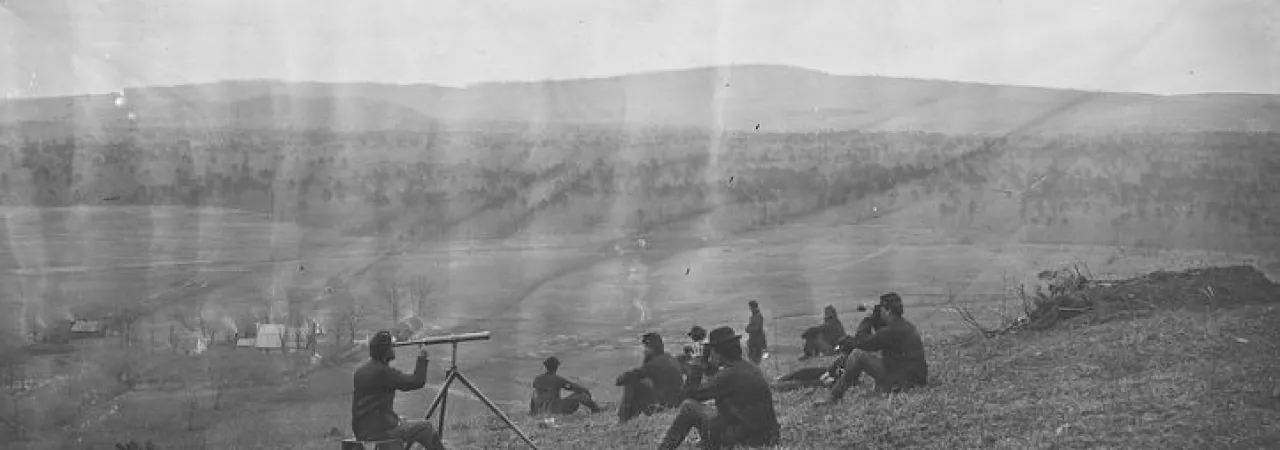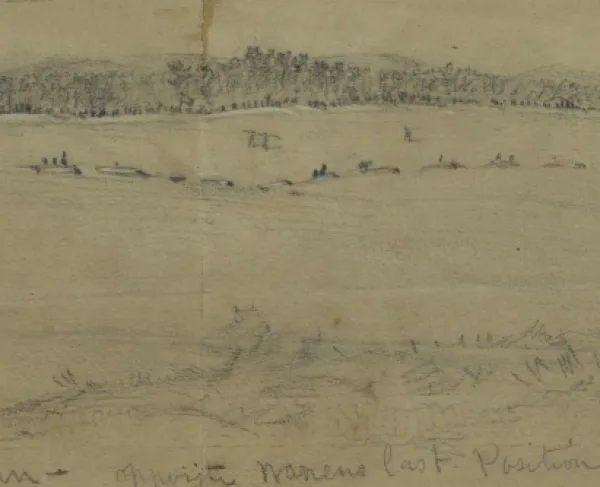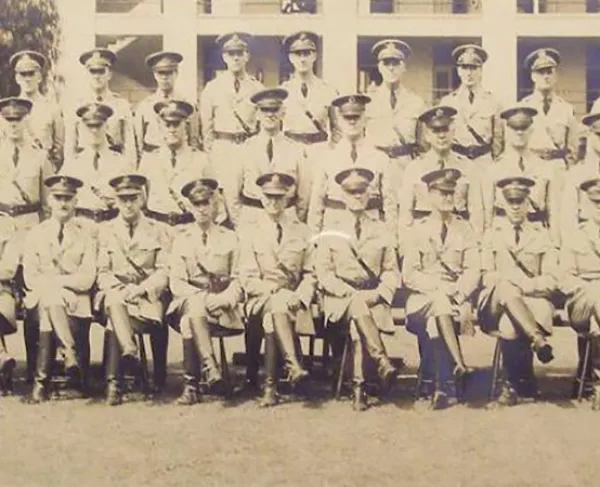
Orange County, Virginia is heir to a rich history in the military annals of the Civil War. Its railroads, turnpikes and waterways served both as avenues for invasion and lines of defense, and what countryside remains still bears the physical legacy of years of epic campaigns. By the early winter of 1863, the men of Gen. George Meade’s Army of the Potomac and Robert E. Lee’s Army of Northern Virginia both knew it as the front.
In November, after the indecisive Bristoe Campaign, Meade, under pressure from Washington to move, crossed the Rapidan to gain Lee’s flank. Speed was the name of the game. In fact, Meade issued eight day’s rations to the men, to avoid the need for a bulky wagon train. If he moved swiftly and decisively, he hoped, his 84,000-man Army of the Potomac could destroy Lee’s 49,000-man Army of Northern Virginia, who were waiting south of the Rapidan River. Longstreet’s Corps was still absent in far-off Tennessee.
In the early morning of November 26, on the first national day of Thanksgiving, the Army of the Potomac set out for another bloody meeting with the Army of Northern Virginia. In command of the III Corps -- replacing Daniel Sickles of Gettysburg notoriety -- was William French, a West Pointer from Baltimore. One staffer described him as “one of those plethoric French colonels who are so stout, and who look so red in the face, that one would suppose someone had tied a cord tightly around their necks.”
French’s III Corps was ordered to cross the Rapidan at Jacob’s Ford, but moved sluggishly from the outset and caused a massive traffic jam when he had to send his artillery east to cross downstream. It was nightfall by the time French completed his crossing. The operation was a full day behind schedule; the element of surprise had been lost.
Meade was furious, and with good cause: Lee had sprung into action. From near the Chancellorsville battlefield, an officer on Lee’s staff wrote home, “With God’s help there shall be a Second Chancellorsville as there was a Second Manassas." Lee dispatched the II Corps to deal with the blue force crossing the river. On the afternoon of the 27th, the leading elements of French’s column under Gen. Henry Prince came upon Confederate Gen. Edward Johnson’s division marching east along the Raccoon Ford Road. Gen. George H. Steuart’s brigade of Maryland Confederates, bringing up the rear, was hit with the first volley. Steuart wheeled his men, formed a line of battle in the road, and attacked with a yell. Johnson, at the head of the column, promptly countermarched his men and sent them in, either unaware or heedless of the size of the enemy force he was facing. Ultimately 16,000 men were engaged, fighting back and forth in deadly confusion, through dense woods and on farmland owned by a man named Payne.
Gen. Joseph Carr’s division, three brigades derisively nicknamed “General French’s pets” because they had not yet seen any truly sanguine combat in the war, moved to support Prince’s left flank, which was in danger of being turned, and duly received their ‘baptism of fire.’ One man of the 10th Vermont described the fight as, “a deluge of lead and iron that swept over us. The musketry was not in the least of a jerky or intermittent sort, but one continuous roll.” Carr’s men, though inexperienced, performed admirably, and became veterans that afternoon. Their arrival stabilized the Union line, which was then in danger of collapsing under pressure from the ever-aggressive Johnson.
Among the Confederate forces that day was 19-year old Pvt. Alexander Tedford Barclay of the Stonewall Brigade, who, at the height of the battle, advanced into a clearing bearing the regimental colors, and planted the flag well in advance of his line. According to one Union account, “Thousands of shots were fired at that lone hero. ‘Shoot the man with the flag’ was heard all around. Hearing a sergeant near me give that command, I said: ‘Don’t shoot that man, he is too brave to kill.’” Barclay, who had enlisted in the 4th Virginia in 1861 and fought in all of its battles from Manassas on, made it back to his line unscathed.
The Battle of Payne’s Farm reached a climax as two Confederate brigades made a final attempt to break the Union lines, which had formed along a slight rise in the terrain ideal for defense. Charging across an open field, Gen. John M. Jones’ Virginians and Gen. Leroy Stafford’s Louisianans failed to attack in unison, and without proper support both efforts were bloodily repulsed. Jones himself was badly wounded in the head.
The fighting faded only with the daylight. The Union advance was halted a mile short of its objective point at a cost of more than 1,400 casualties. Soldiers on both sides remembered it in the most severe terms. Col. Charles T. Collis of the 114th Pennsylvania judged it “one of the sharpest and best fought affairs of the war. The musketry was the most terrific any of us had ever heard, and the chances of getting off without a decent wound was about as poor as it possibly could have been.” For Confederate Alexander Pendleton, the fight at Payne’s Farm was “as warm a musketry fire as I have experienced for a good while – certainly worse than I have been in since Sharpsburg.” As night covered the battlefield and a cold winter rain began to fall, Lee pulled Johnson’s men back to a carefully selected position on the west side of Mine Run, and the King of Spades set his men to work with their shovels.

Union forces were confronted the next morning with the sight of the entrenchments in their front--placed on a dominant ridge and designed by experienced hands to concentrate overlapping fire on any approach. With memories of Fredericksburg still relatively fresh in their minds, the men of the Army of the Potomac were thoroughly demoralized. Lee had effectively parried Meade’s movements. The Confederates strongly entrenched in Meade’s front were practically hoping the Federals would attack them; to make the same mistake Burnside had eleven months earlier. For two days the armies eyed each other warily. Union artillery bombarded the dug-in Confederates while Union Generals Warren and Sedgwick probed in vain for a nonexistent weakness in the Confederate line. Rather than order what the men knew would have been a hopeless assault on November 30, Meade withdrew the way he had come the next day. He was frustrated with himself and furious with French, whose bumbling he believed had cost the Army of the Potomac a chance to make his numerical advantage tell.
Lee, too, was frustrated. In waiting for a second Fredericksburg he felt he had missed the chance at a second Chancellorsville. The same staff officer who had written of his hope for another of Lee’s famous victories remarked, “We miss Jackson and Longstreet terribly,” to which Lee replied regretfully, “I am too old to command this army. We should never have permitted those people to get away.”
With this last meaningful military action of a bloody year concluded, both armies went into winter quarters. Lee had lost 680 casualties he could ill afford, Meade 1,272. 1864 would make the previous years of the Civil War look like a warm-up exercise.





